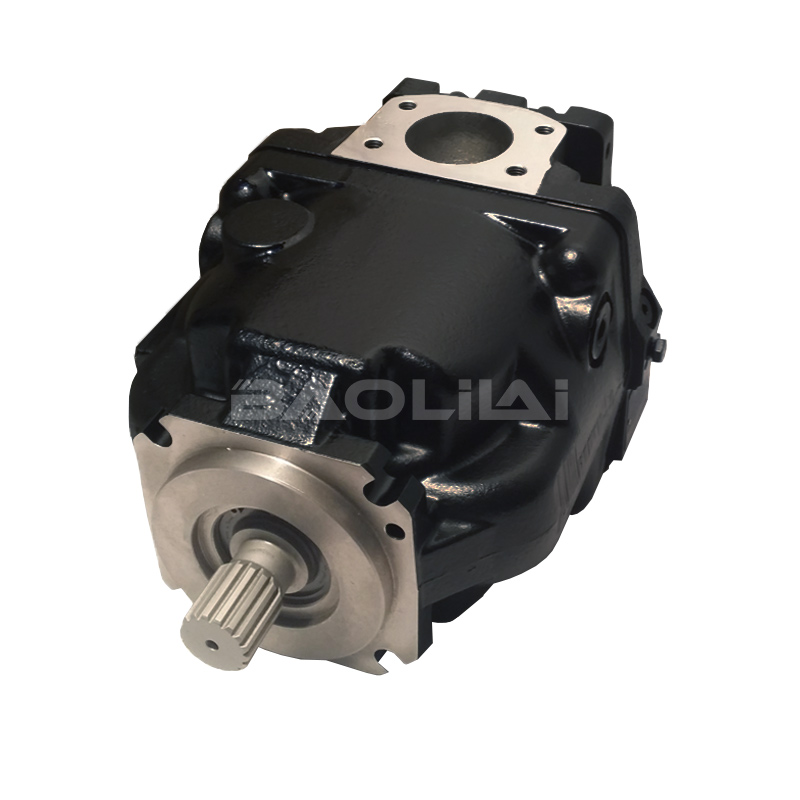Common problems and solutions for Danfoss hydraulic pump maintenance
Common problems and solutions for Danfoss hydraulic pump maintenance
Danfoss 11055788 hydraulic pump is widely used in engineering machinery, agricultural equipment, industrial automation and other fields due to its high efficiency, durability and strong stability. However, during long-term use, the hydraulic pump may have various faults, affecting the normal operation of the equipment. In order to ensure the efficient and stable operation of the hydraulic system, it is crucial to detect problems in time and take appropriate maintenance measures. This article will introduce the common problems and solutions of Danfoss ER-R-100B-LS-25-20-NN-N-3-S1RP-A1N-AAA-NNN-NNN hydraulic pump during use, to help users better maintain and maintain equipment.

- Common problems and fault analysis of hydraulic pumps 1. Hydraulic pump pressure is insufficient or no pressure Fault cause: The suction pipe or oil circuit is blocked, resulting in insufficient oil supply.
The internal parts of the hydraulic pump are severely worn, such as the plunger, distribution plate or seal are damaged, resulting in leakage.
The hydraulic oil is of poor quality and the viscosity is too low, which affects the working efficiency of the pump.
The control valve is damaged or improperly adjusted, and normal pressure cannot be maintained.
Solution: Check whether the suction pipe and filter are blocked, and clean or replace them if necessary.
Check the wear of the internal parts of the ERR100BLS2520NNN3S1RPA1NAAANNNNNN hydraulic pump. If the damage is serious, the relevant parts need to be replaced.
Select hydraulic oil that meets the specifications to ensure that the oil is clean and avoid contamination by impurities.
Check and adjust the setting of the control valve to ensure its normal operation. - The hydraulic pump has abnormal noise or excessive vibration. Cause of failure: Air is mixed in the hydraulic oil, causing cavitation and affecting the normal operation of the pump.
The pump shaft and the coupling are not installed in the center, resulting in vibration and noise during operation.
Bearing damage or poor lubrication causes friction noise in mechanical parts.
The internal components of the hydraulic pump are loose or foreign matter enters the pump body, resulting in abnormal vibration.
Solution: Check whether there is leakage in the oil tank and oil pipe, ensure that the hydraulic system is well sealed, and avoid air from entering.
Ensure the centering accuracy of the pump shaft and the motor shaft, and adjust the installation position of the coupling.
Check the bearing condition, replace damaged bearings if necessary, and ensure good lubrication.
Disassemble the hydraulic pump for internal inspection, clean foreign objects and tighten loose parts. - Hydraulic pump leakage problem Cause: The seal is aged or damaged, resulting in external or internal leakage.
The bolts at the connection are loose, causing oil leakage.
The working pressure of the hydraulic pump is too high, exceeding the bearing capacity of the seal.
Hydraulic oil pollution causes seal corrosion failure.
Solution: Check the seal regularly, and replace it in time if it is aged, deformed or damaged.
Tighten the bolts at the connection between the pump body and the pipeline to ensure good sealing.
Adjust the system pressure to the normal range to avoid overload operation.
Use high-quality and clean hydraulic oil to prevent oil contamination from damaging the seal. - Hydraulic pump temperature is too high Cause: Poor heat dissipation of hydraulic oil causes system overheating.
Excessive friction inside the hydraulic pump causes heat accumulation.
The load is too high, causing the pump to be in a high power output state for a long time.
Improper selection of hydraulic oil, too high or too low viscosity.
Solution: Check whether the cooling system is normal, clean the cooler or add a cooling device.
Use suitable hydraulic oil to ensure that the viscosity meets the requirements of the working environment.
Adjust the system load to avoid long-term overload of the hydraulic pump.
Regularly maintain the hydraulic pump to reduce internal friction and improve work efficiency. - Daily maintenance of hydraulic pumps In order to extend the service life of Danfoss hydraulic pumps and reduce the occurrence of failures, it is recommended to take the following maintenance measures:
Regularly replace hydraulic oil
Ensure that the hydraulic oil is clean and pollution-free, and regularly replace and clean the oil tank.
Clean the filter and suction pipe
Regularly check and clean the filter to prevent impurities from clogging the oil circuit.
Check the sealing of the hydraulic pump
Observe whether there is leakage and replace damaged seals in time.
Regularly detect system pressure and flow
Use pressure gauges and flow meters to monitor the operating status of the hydraulic system and adjust them in time.
Regularly check bearings and couplings
Ensure that the bearings are well lubricated, check the alignment of the couplings, and reduce vibration and noise. - Danfoss hydraulic pumps play an important role in many industrial fields with their high reliability and high efficiency. However, in order to ensure the long-term stable operation of the equipment, users need to master the identification and treatment methods of common faults and strengthen daily maintenance and care. Through scientific and reasonable repair and maintenance measures, not only can equipment failures be reduced, but also work efficiency can be improved and the service life of the equipment can be extended.
This article is published by the official website of Baolilai Hydraulics, please contact the author and indicate the source for reprinting:https://www.baolilai-pump.cn/news/view-3299.html


